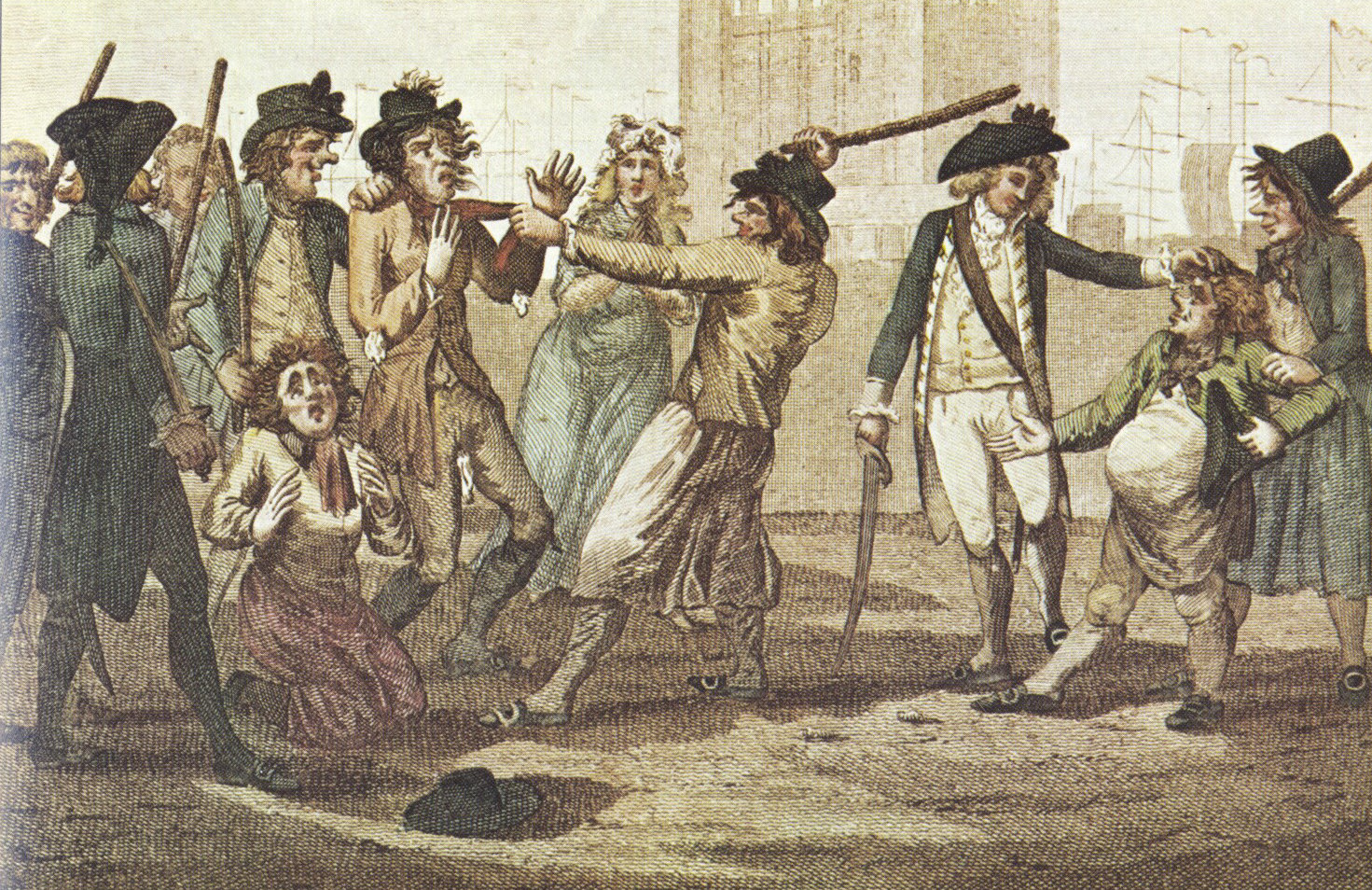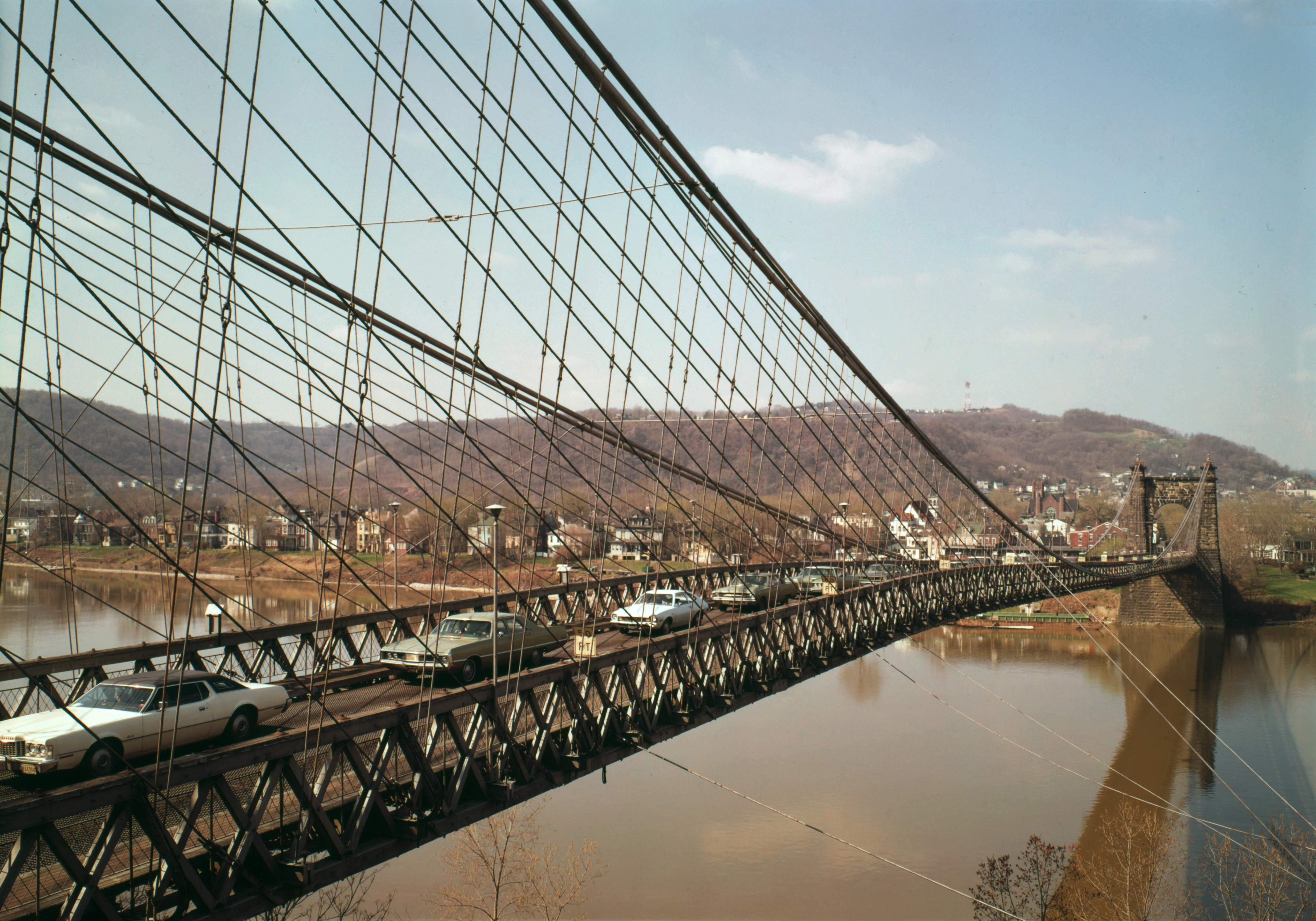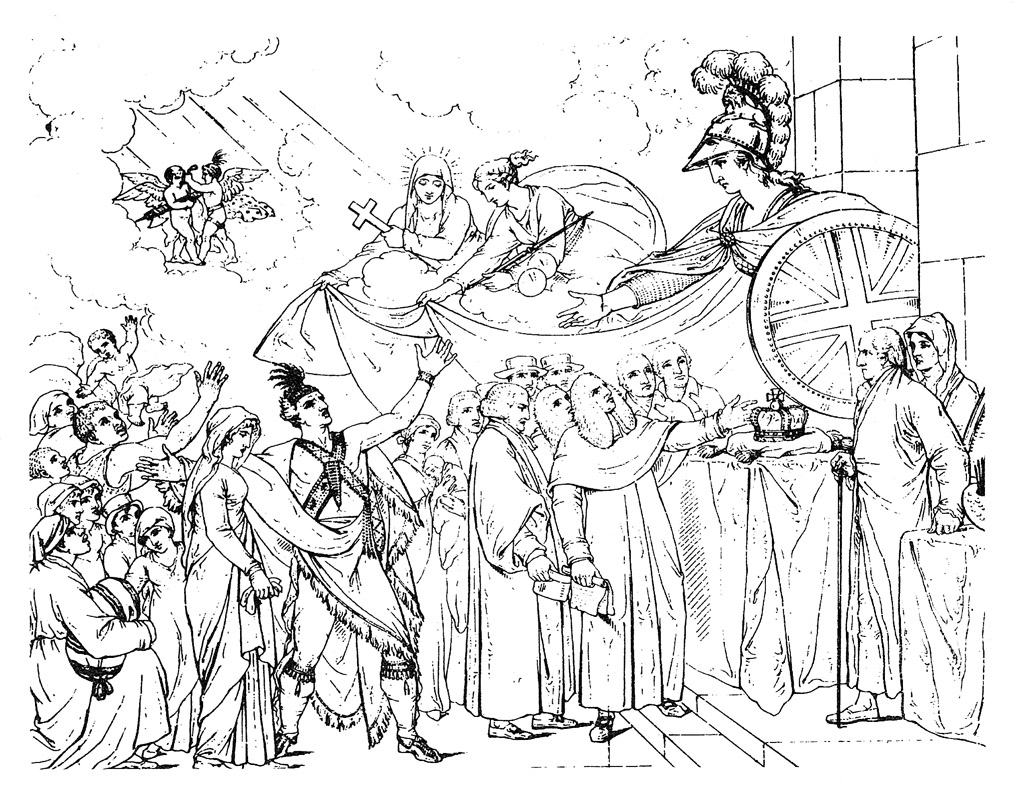|
Battle Of Blue Licks
The Battle of Blue Licks, fought on August 19, 1782, was one of the last battles of the American Revolutionary War. The battle occurred ten months after Lord Cornwallis's surrender at Yorktown, which had effectively ended the war in the east. On a hill next to the Licking River in what is now Robertson County, Kentucky (then Fayette County, Virginia), a force of about 50 Loyalists along with 300 Indian warriors ambushed and routed 182 Kentucky militia, who was partially led by Daniel Boone, the famed frontiersman. It was the last victory for the Loyalists and natives during the frontier war. British, Loyalist and Native forces would engage in fighting with American forces once more the following month in Wheeling, West Virginia, during the Siege of Fort Henry. Background Caldwell's expedition Although the main British Army under Lord Cornwallis had surrendered at Yorktown in October 1781, virtually ending the war in the east, fighting on the western frontier continued. Aid ... [...More Info...] [...Related Items...] OR: [Wikipedia] [Google] [Baidu] |
Daniel Boone
Daniel Boone (, 1734September 26, 1820) was an American pioneer and frontiersman whose exploits made him one of the first folk heroes of the United States. He became famous for his exploration and settlement of Kentucky, which was then beyond the western borders of the Thirteen Colonies. In 1775, Boone founded the Wilderness Road through the Cumberland Gap and into Kentucky, in the face of resistance from Native Americans. He founded Boonesborough, one of the first English-speaking settlements west of the Appalachian Mountains. By the end of the 18th century, more than 200,000 people had entered Kentucky by following the route marked by Boone. He served as a militia officer during the Revolutionary War (1775–1783), which in Kentucky was fought primarily between American settlers and British-allied Indians. In 1778, Boone was captured by the Shawnee and was, according to legend, adopted by the Shawnee Chief and given the name "Sheltowee", or Big Turtle. After months o ... [...More Info...] [...Related Items...] OR: [Wikipedia] [Google] [Baidu] |
Siege Of Yorktown
The siege of Yorktown, also known as the Battle of Yorktown and the surrender at Yorktown, was the final battle of the American Revolutionary War. It was won decisively by the Continental Army, led by George Washington, with support from the Marquis de Lafayette and French Army troops, led by the Comte de Rochambeau, and a French Navy force commanded by the Comte de Grasse over the British Army commanded by British Lieutenant General Charles Cornwallis. The siege began on September 28, 1781, and ended on October 19, 1781, at exactly 10:30 am in Yorktown, Virginia. The victory of Washington and the Continental Army at Yorktown led to the capture of both Cornwallis and the British Army, who subsequently surrendered, leading the British to negotiate an end to the conflict. The British defeat at Yorktown led to the Treaty of Paris in 1783, in which the British acknowledged the independence and sovereignty of the Thirteen Colonies and subsequently to the establishment of the Uni ... [...More Info...] [...Related Items...] OR: [Wikipedia] [Google] [Baidu] |
Mad River (Ohio)
The Mad River (Shawnee: ''Hathennithiipi'' ) is a stream located in the west central part of the U.S. state of Ohio. It flows U.S. Geological Survey. National Hydrography Dataset high-resolution flowline dataThe National Map, accessed May 19, 2011 from Logan County to downtown Dayton, where it meets the Great Miami River. The stream flows southwest from its source near Campbell Hill through West Liberty, along U.S. Route 68 west of Urbana, past Springfield (the point of confluence with Buck Creek), then along Ohio State Route 4 into Dayton. The stream's confluence with the Great Miami River is in Deeds Park. The Mad River was one of the Great Miami River tributaries that flooded during the Great Dayton Flood of 1913, resulting in the creation of the Miami Conservancy District. The river derives its name from its mad, broken, and rapid current. Historically, the stream has also been known by the names Mad Creek and Tiber River, respectively, as well as by the Italian fo ... [...More Info...] [...Related Items...] OR: [Wikipedia] [Google] [Baidu] |
Ohio River
The Ohio River () is a river in the United States. It is located at the boundary of the Midwestern and Southern United States, flowing in a southwesterly direction from Pittsburgh, Pennsylvania, to its river mouth, mouth on the Mississippi River in Cairo, Illinois, Cairo, Illinois. It is the third largest river by discharge volume in the United States and the largest tributary by volume of the Mississippi River. It is also the sixth oldest river on the North American continent. The river flows through or along the border of six U.S. state, states, and its drainage basin includes parts of 14 states. Through its largest tributary, the Tennessee River, the basin includes several states of the southeastern United States. It is the source of drinking water for five million people. The river became a primary transportation route for pioneers during the westward expansion of the early U.S. The lower Ohio River just below Louisville was obstructed by rapids known as the Falls of the Oh ... [...More Info...] [...Related Items...] OR: [Wikipedia] [Google] [Baidu] |
Fort Detroit
A fortification (also called a fort, fortress, fastness, or stronghold) is a military construction designed for the defense of territories in warfare, and is used to establish rule in a region during peacetime. The term is derived from Latin ("strong") and ("to make"). From very early history to modern times, defensive walls have often been necessary for cities to survive in an ever-changing world of invasion and conquest. Some settlements in the Indus Valley Civilization were the first small cities to be fortified. In ancient Greece, large cyclopean stone walls fitted without mortar had been built in Mycenaean Greece, such as the ancient site of Mycenae. A Greek ''Towns of ancient Greece#Military settlements, phrourion'' was a fortified collection of buildings used as a military garrison, and is the equivalent of the ancient Roman, Roman castellum or fortress. These constructions mainly served the purpose of a watch tower, to guard certain roads, passes, and borders. Th ... [...More Info...] [...Related Items...] OR: [Wikipedia] [Google] [Baidu] |
Siege Of Yorktown
The siege of Yorktown, also known as the Battle of Yorktown and the surrender at Yorktown, was the final battle of the American Revolutionary War. It was won decisively by the Continental Army, led by George Washington, with support from the Marquis de Lafayette and French Army troops, led by the Comte de Rochambeau, and a French Navy force commanded by the Comte de Grasse over the British Army commanded by British Lieutenant General Charles Cornwallis. The siege began on September 28, 1781, and ended on October 19, 1781, at exactly 10:30 am in Yorktown, Virginia. The victory of Washington and the Continental Army at Yorktown led to the capture of both Cornwallis and the British Army, who subsequently surrendered, leading the British to negotiate an end to the conflict. The British defeat at Yorktown led to the Treaty of Paris in 1783, in which the British acknowledged the independence and sovereignty of the Thirteen Colonies and subsequently to the establishment of the Uni ... [...More Info...] [...Related Items...] OR: [Wikipedia] [Google] [Baidu] |
British Army During The American War Of Independence
The British Army during the American Revolutionary War served for eight years in the American Revolutionary War, which was fought throughout North America, the Caribbean, and elsewhere from April 19, 1775, to September 3, 1783. Tensions between the American patriots and the British Army escalated during the American Revolution, which began in 1763 and ultimately escalated into a military conflict in 1775 at the Battles of Lexington and Concord in present-day 22.962 European casualties Two months later, in June 1775, the Second Continental Congress, gathered in present-day Independence Hall in the revolutionary capital of Philadelphia, appointed George Washington commander-in-chief of the Continental Army, which the Congress organized by uniting and organizing patriot militias into a single army under the command of Washington, who led it in its eight-year war against the British Army. The following year, in July 1776, the Second Continental Congress, representing the Thir ... [...More Info...] [...Related Items...] OR: [Wikipedia] [Google] [Baidu] |
Siege Of Fort Henry (1782)
The second siege of Fort Henry was a three-day engagement during the American Revolutionary War that began on September 11, 1782. A force of about 260 Wyandot people, Wyandot, Shawnee, Mingo and Lenape attacked Fort Henry (West Virginia), Fort Henry, an American fortification at what is now Wheeling, West Virginia. They were accompanied by 40 soldiers from Butler's Rangers, a British provincial regiment. The siege was one of the last engagements of the Revolutionary War. In the 19th century, the story of the siege became well known to Americans due to the "gunpowder exploit" of Betty Zane. Background Built in 1774 during Lord Dunmore's War on a bluff above the Ohio River, Fort Henry protected the settlers who began moving into the area in 1769. By 1782, roughly 25 families were living in the vicinity of the fort, including Ebenezer Zane and his brother Silas. The fort's wooden palisade enclosed an area of about half an acre with bastions at each corner. Inside was a magazine, bar ... [...More Info...] [...Related Items...] OR: [Wikipedia] [Google] [Baidu] |
Wheeling, West Virginia
Wheeling is a city in Ohio County, West Virginia, Ohio and Marshall County, West Virginia, Marshall counties in the U.S. state of West Virginia. The county seat of Ohio County, it lies along the Ohio River in the foothills of the Appalachian Mountains within Northern Panhandle of West Virginia, the state's Northern Panhandle. It is the List of municipalities in West Virginia, fifth-most populous city in West Virginia and the most populous city in the Northern Panhandle with a population of 27,062 at the 2020 United States census, 2020 census. The Wheeling metropolitan area had 139,513 residents in 2020. Wheeling is located about west of Pittsburgh and east of Columbus, Ohio, Columbus via Interstate 70 in West Virginia, Interstate 70. Wheeling was settled in 1769 on land contested between colonial Province of Pennsylvania, Pennsylvania and Colony of Virginia, Virginia, and later grew to become Virginia's largest city west of the Appalachians. During the American Civil War, Whee ... [...More Info...] [...Related Items...] OR: [Wikipedia] [Google] [Baidu] |
Kentucky Militia
The Kentucky militia was a militia of what is now the U.S. state of Kentucky. It was formed in 1775 during the American Revolution."Kentucky Militia formed over 200 years ago becomes modern day National Guard" ''Supplement to the Cynthiana Democrat'' in the ''Cynthiana Democrat'', Cynthiana, Kentucky, 108th year, number 2, January 15, 1976, page 8. It mostly consisted of hunters and farmers. Members of the militia had a role in the formation of Kentucky as a state and the militia was maintained after statehood in 1792. The Kentucky Militia fought in the Battle of Blue Licks
The Battle of Blue Lic ...
[...More Info...] [...Related Items...] OR: [Wikipedia] [Google] [Baidu] |
Indigenous Peoples Of The Americas
In the Americas, Indigenous peoples comprise the two continents' pre-Columbian inhabitants, as well as the ethnic groups that identify with them in the 15th century, as well as the ethnic groups that identify with the pre-Columbian population of the Americas as such. These populations exhibit significant diversity; some Indigenous peoples were historically hunter-gatherers, while others practiced agriculture and aquaculture. Various Indigenous societies developed complex social structures, including pre-contact monumental architecture, organized city, cities, city-states, chiefdoms, state (polity), states, monarchy, kingdoms, republics, confederation, confederacies, and empires. These societies possessed varying levels of knowledge in fields such as Pre-Columbian engineering in the Americas, engineering, Pre-Columbian architecture, architecture, mathematics, astronomy, History of writing, writing, physics, medicine, Pre-Columbian agriculture, agriculture, irrigation, geology, minin ... [...More Info...] [...Related Items...] OR: [Wikipedia] [Google] [Baidu] |
Loyalist (American Revolution)
Loyalists were refugee colonists from Thirteen Colonies, thirteen of the 20 British American colonies who remained loyal to the British Crown, British crown during the American Revolution, often referred to as Tories, Royalists, or King's Men at the time. They were opposed by the Patriot (American Revolution), Patriots or Whigs, who supported the revolution and considered them "persons inimical to the liberties of America." Prominent Loyalists repeatedly assured the Government of the United Kingdom, British government that many thousands of them would spring to arms and fight for the Crown. The British government acted in expectation of that, especially during the Southern theater of the American Revolutionary War, Southern campaigns of 1780 and 1781. Britain was able to effectively protect the people only in areas where they had military control, thus the number of military Loyalists was significantly lower than what had been expected. Loyalists were often under suspicion of t ... [...More Info...] [...Related Items...] OR: [Wikipedia] [Google] [Baidu] |










